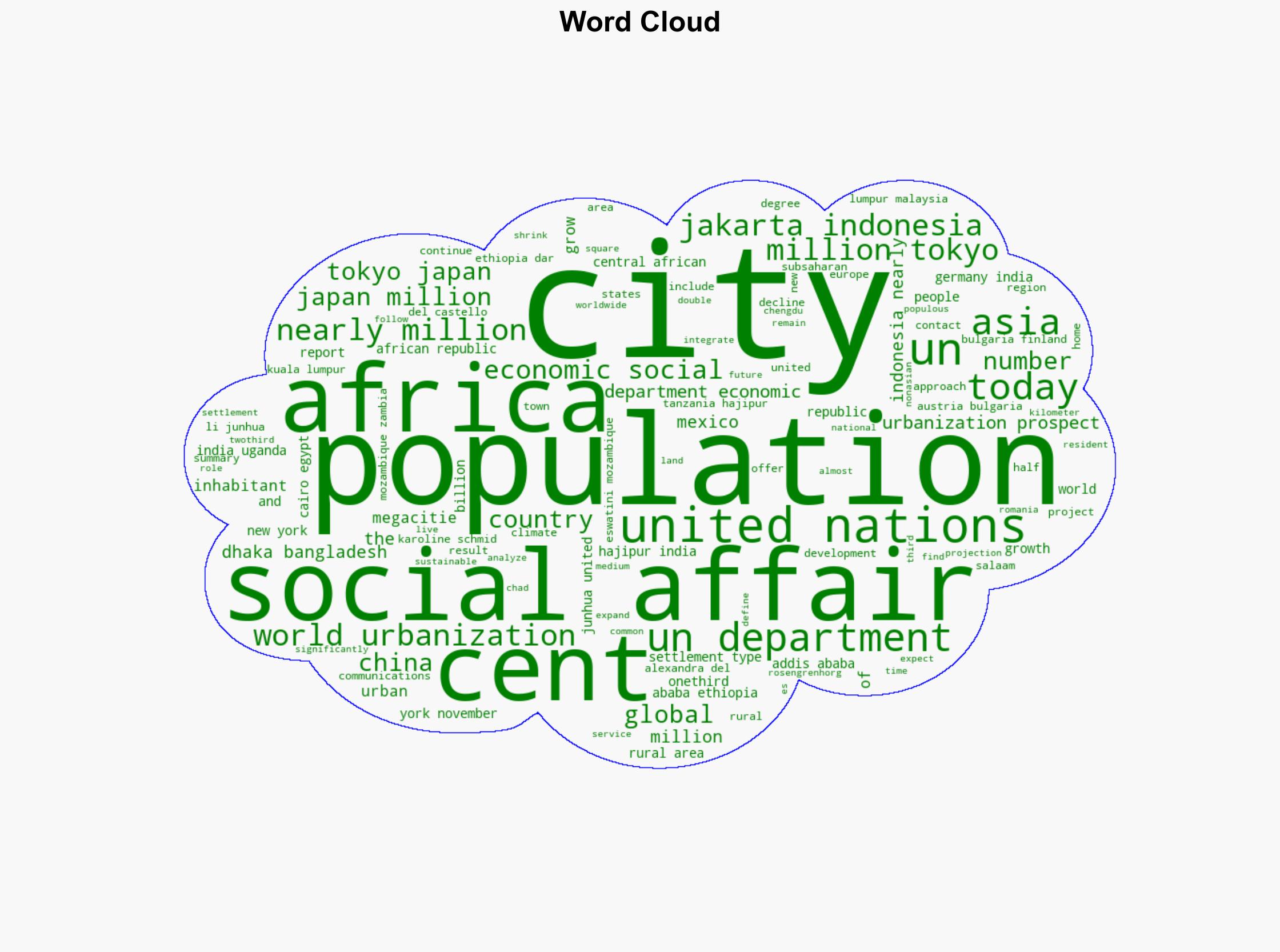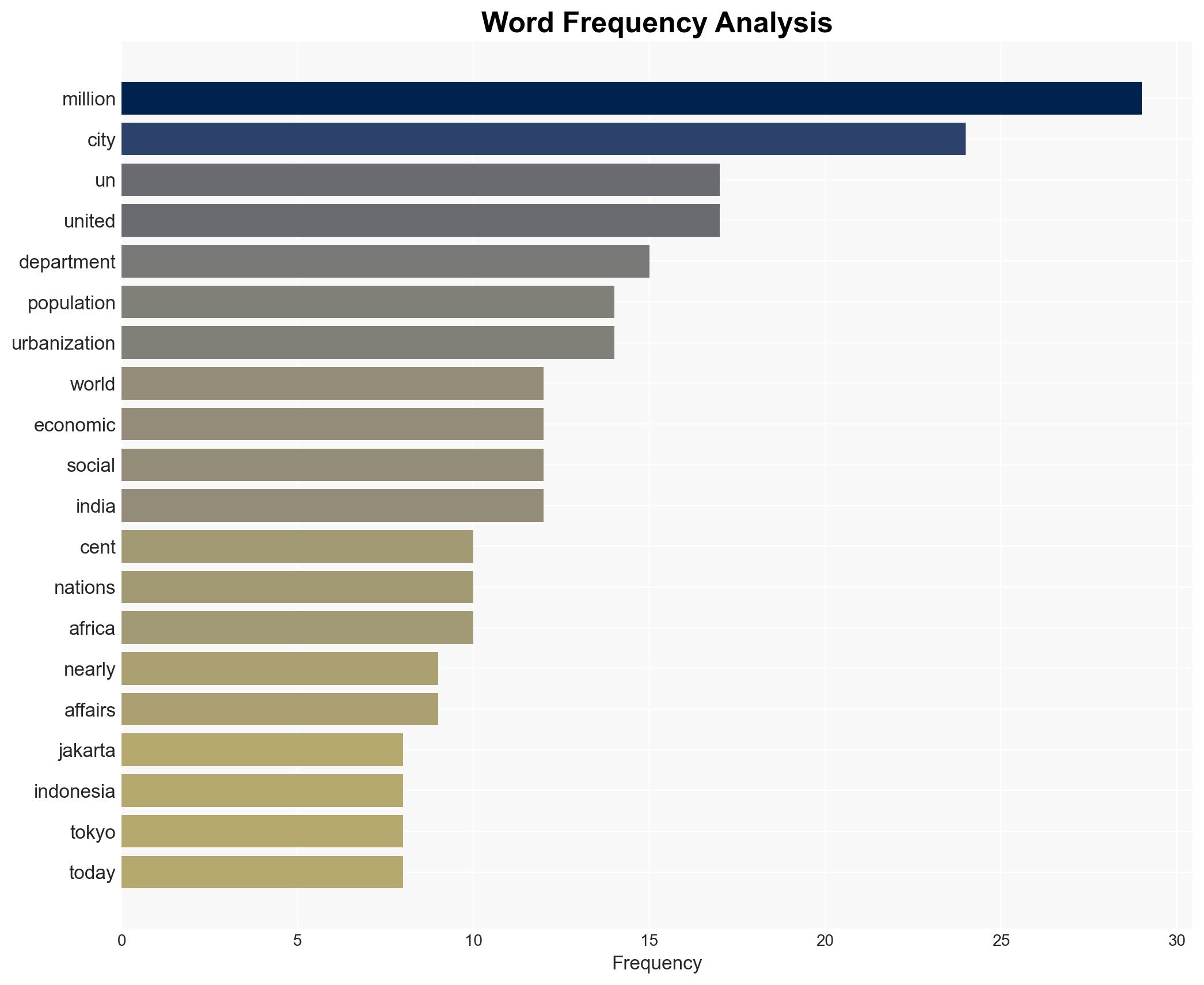Press Release Cities are home to 45 per cent of the global population with megacities continuing to grow UN report finds – UN News
Published on: 2025-11-18
AI-powered OSINT brief from verified open sources. Automated NLP signal extraction with human verification. See our Methodology and Why WorldWideWatchers.
Intelligence Report: Urbanization Trends and Strategic Implications
1. BLUF (Bottom Line Up Front)
The most supported hypothesis is that the continued growth of megacities, particularly in Asia and Africa, will drive significant shifts in global economic and social dynamics, with a moderate confidence level. Strategic recommendations include enhancing infrastructure investment, urban planning, and policy integration to manage urban growth sustainably.
2. Competing Hypotheses
Hypothesis 1: The growth of megacities will lead to increased economic opportunities and innovation hubs, driving global economic growth.
Hypothesis 2: The rapid expansion of megacities will strain resources, exacerbate inequality, and lead to increased socio-political instability.
Hypothesis 1 is more likely given historical trends where urbanization has correlated with economic development. However, Hypothesis 2 cannot be discounted due to existing challenges in infrastructure and governance in rapidly urbanizing regions.
3. Key Assumptions and Red Flags
Assumptions: Urban growth will continue at projected rates; governments will effectively manage urbanization challenges.
Red Flags: Potential over-reliance on optimistic growth projections; underestimation of infrastructure and governance challenges.
Deception Indicators: Possible data manipulation by local governments to attract investment or aid.
4. Implications and Strategic Risks
Urbanization could lead to increased demand for resources, potentially escalating geopolitical tensions over resource allocation. Economic disparities may widen, leading to social unrest. Cyber and informational threats may increase as urban centers become more digitally connected.
5. Recommendations and Outlook
- Enhance international cooperation on sustainable urban planning and infrastructure investment.
- Promote policies that address inequality and integrate rural-urban development strategies.
- Best Scenario: Urbanization drives global economic growth and innovation.
- Worst Scenario: Resource scarcity and socio-political instability lead to conflict.
- Most-likely Scenario: Mixed outcomes with both economic growth and localized challenges.
6. Key Individuals and Entities
Li Junhua, United Nations Under-Secretary-General for Economic and Social Affairs, plays a pivotal role in shaping urbanization policies.
7. Thematic Tags
Regional Focus, Regional Focus: Asia, Africa
Structured Analytic Techniques Applied
- Causal Layered Analysis (CLA): Analyze events across surface happenings, systems, worldviews, and myths.
- Cross-Impact Simulation: Model ripple effects across neighboring states, conflicts, or economic dependencies.
- Scenario Generation: Explore divergent futures under varying assumptions to identify plausible paths.
Explore more:
Regional Focus Briefs ·
Daily Summary ·
Support us





